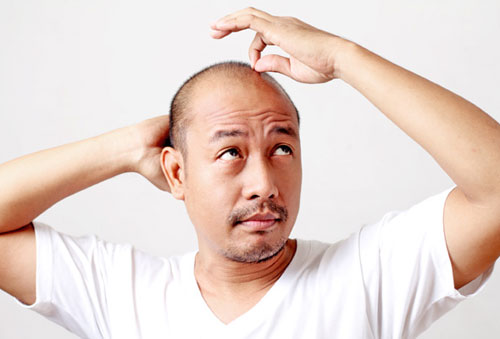
Hair loss or baldness (technically known as ALOPECIA) is a loss of hair from the head and it can have many causes including fungal infections (tinea capitis), traumatic damage such as by compulsive pulling (trichotillomania), as a result of radiotherapy or chemotherapy, as a result of nutritional deficiencies such as iron, as a result of autoimmune phenomena (Alopecia Areata), associated with Systemic Lupus Erythematosus or thyroid malfunction and many others.
Normally we have about 100-150.000 hairs on our. After puberty we notice a daily loss due to cyclic activity of hair follicle which every 2-5 years rests for about 3 months and then produces a new hair. The fall phase is called telogen while the growth phase is called anagen where the hair grows about 1 cm per month and then falls again. The normal loss of hair varies from an average of 20- 30 to more than 100 hair per day. Therefore we don’t have to worry about seeing our hair on the pillow or in the comb because it is normal. When we notice a decrease (widespread or limited) in the number of hairs on the scalp. Let’s consult a DERMATOLOGIST HAIR EXPERT, who after a thorough examination will make a diagnosis and will advise the right treatment.
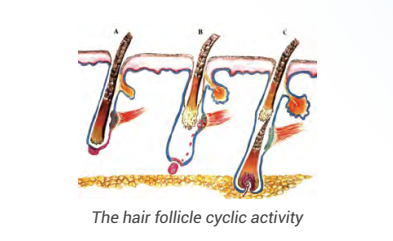
ALOPECIA (CLASSIFICATION)
ReversiBle:
Androgenetic Alopecia (common baldness)
After pregnancy
Stress
Deficiencies in certain nutrients (Vitamins,iron zinc)
After important diseases or operations
Alopecia Areata (round patches)
Hypothyroidism, Hyperthyroidism, SLE
Fungal infections (tinea capitis)
IrreversiBle:
Dermatological Diseases (Lichen,Kerion)
Scars
Tumors
Radiations
Pseudo Alopecia:
Trichotillomania
Some congenital anomalies
Some infections
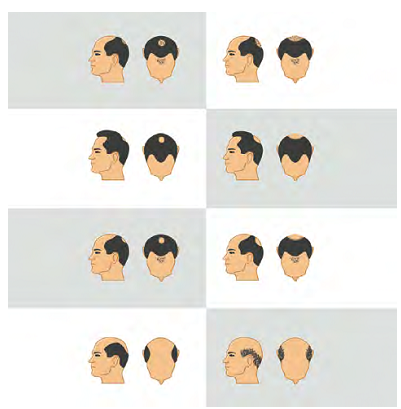
Faced with a hair problem the dermatologist will need to make a correct diagnosis, he/she will examine the patient carefully and will do some tests such as microscopic examination of the hair. Sometimes, he/she may requires blood tests to investigate any deficiencies in vitamins and minerals, to control the thyroid or even some sex hormones, to control the progression of important diseases that can cause hair loss. In cases resulting from diseases of the scalp where is difficult to make a correct diagnosis a biopsy will be performed.
Every hair loss has its own therapy, depending on the diagnosis. They will also be given advise on the most suitable products for the daily management of the hair.
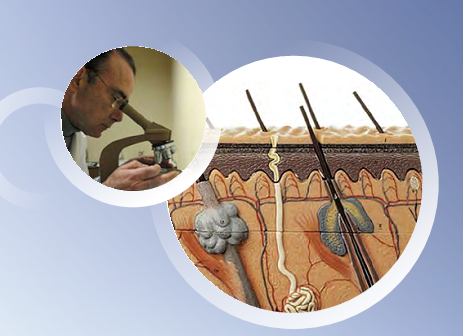
It is the most common hair problem and also the most widespread in nature. Androgenetic Alopecia gradually becomes evident around the age of 18-20 years and it is irremediably progressive in the time. It consists in the loss of hair in the central zone of the scalp with saving the sides and rear, and it is caused by the presence in these areas of a enzyme, 5-α reductase, genetically inherited, that interferes with the normal cycle of hair growth until the total disappearance of the hair follicle. Androgenic Alopecia is present in both genders, with prevalence in men, and with different patterns: as for women it's usually maintained the hairline and the defect occurs behind it. There are many medical treatments that try to combat its progression, sometimes with success (finasteride, lotions with hormones), but the only way to recover the lost hair is through the operation of HAIR TRANSPLANT.
HAIR TRANSPLANT
Hair Transplant consists of transferring follicle units (full of hair) from the donor area located at the back of the head to the bald area where transplanted hair will begin to grow after 3 months and, maintaining their genetic memory, they will not suffer the damage of androgens hormones.
Its main indication is the correction of Androgenic Alopecia but it can be successfully practiced even on cicatricial alopecia. The duration of the surgery is around 3 hours and it is performed under local anaesthesia. After that the patient is medicated with a bandage that the doctor will remove the following morning. Periodic checks will be made after 4-8-12 months to check that all is well and that the hair is growing.
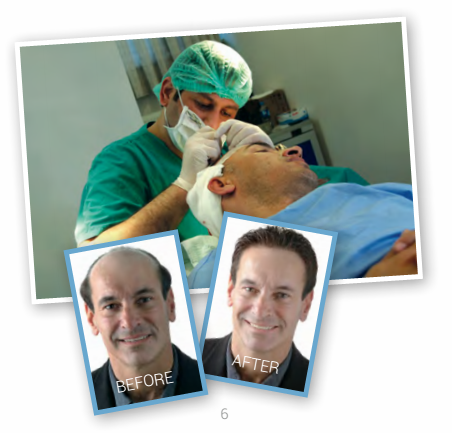
DR. MASSIMO CIOCCOLINI – DERMATOLOGIST HAIR EXPERT
![]()
Dr Massimo Cioccolini qualified in medicine at the University of Bologna in 1978 and gained his specialisation in Dermatology from the University of Parma in 1982.
Since 1985 he has worked at Ascoli Piceno Hospital Trust as a Dermatology Consultant and since 2007 at San Benedetto del Tronto Hospital as a Dermatosurgeon, posts he still hold today.
From 1987-1990 he attended training sessions in dermatosurgery and autologous hair transplantation in Paris, under Dr Serge Letessier and Dr Patrick Rabineau, widely accliamed for their pioneering work in both dermatosurgery and hair transplantation.
Since 1982 he has worked in his private clinic,both in General Dermatology – Dermatosurgery and in Tricology-Hair Transplant (with more than 3000 hair transplants executed).
He has published a number of papers in national and international scientific journals and made numerous presentations on dermatosurgery and hair transplantation to Italian and international conferences.
He is member of the Italian Society of Tricology.
alOpeCia (clASSIFIcATIOn)
alOpeCia (clASSIFIcATIOn)